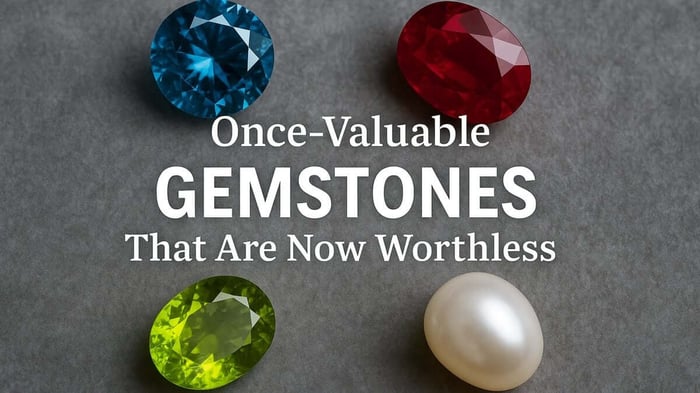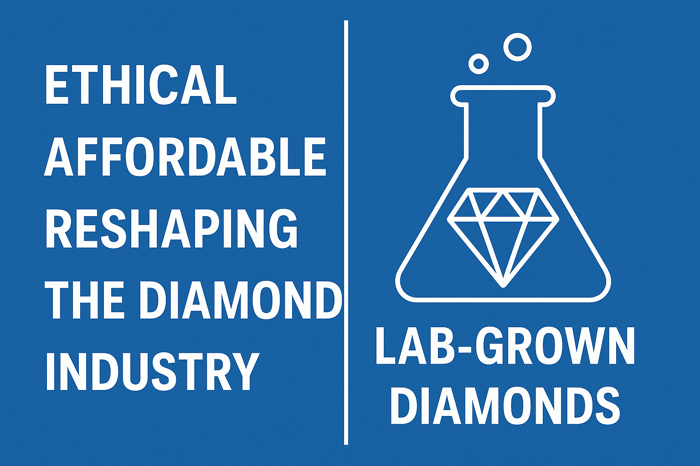In This Article
Ever stared into the heart of a gemstone and felt the promise of stories untold? I once bought a piece of 'rare' blue zircon on a whim, dazzled by its electric colour—only to later learn it was as prone to heartbreak as it was to brilliance. You’re not alone if you’ve ever been drawn in by the mystique, rarity, or the sparkling surface of gems, only to discover there’s more brewing below. Jump in with me for a wild stroll through the market's most dramatic plot twists, where beauty, human folly, and a dash of science meet gemstone value with surprising results.
TL;DR: Shimmer Doesn’t Equal Substance
TL;DR: The market has hyped, hallowed, and occasionally hoodwinked gemstones—even the glittering favourites can suddenly lose their appeal. Be cautious if you're pursuing rarity or investing in beauty, as the market often favours illusions over miracles.
Fading Legends: When Rarity Isn’t Enough
Pearls, Tanzanite & the Vanishing Act: How Legends Become Lore (loose gemstones trends)
Imagine this: a Victorian parlour, heavy with the scent of beeswax and old roses. A mother-in-law, upright as a candlestick, passes down a string of pearls—her family’s pride, her own coming-of-age gift. She expects gasps of awe, perhaps even envy. Instead, her daughter-in-law, scrolling through her phone, finds the same lustrous pearls for sale online, mass-produced and affordable. The old woman’s face falls. The legend, it seems, has become just another accessory.
This is the story of how some of the world’s most coveted loose gemstones—pearls and tanzanite—lost their magic, not to scandal or scarcity, but to the quiet march of technology and changing tastes.
0.25ct Lab Diamond Cross Necklace D/VVS Quality in 9k Rose Gold
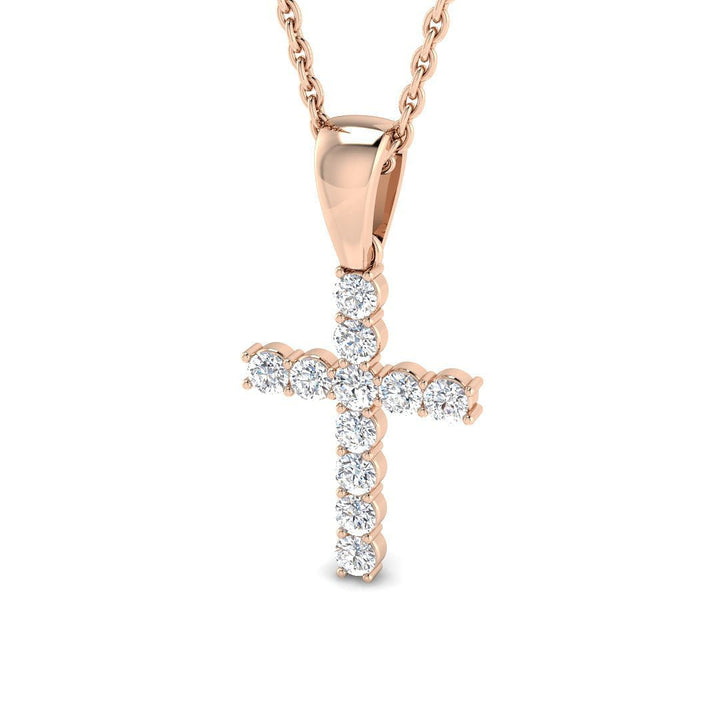
£348.00
£695.00
Experience the enchantment of our 0.25ct Lab Diamond Cross Necklace in 9k Rose Gold. Meticulously crafted, this delicate piece features a cross pendant adorned with ethically sourced lab diamonds. Each diamond boasts a brilliant D/VVS quality and is expertly cut… read more
The Rise and Quiet Fall of Natural Pearls
Once upon a time, natural pearls were the ultimate symbol of royalty and power. They weren’t mined but harvested—each one a defence mechanism, a wounded mollusc’s answer to pain. Divers risked their lives, plunging into the dark waters off Ceylon, the Arabian Gulf, and India’s coastlines, searching for a shimmer that might not even exist. The rarity was staggering; most oysters never produced a pearl, and those that did often hid their treasures for years. When a diver surfaced, breathless and bleeding, with a single perfect orb, it was as if he’d snatched a piece of the moon itself.
For centuries, these pearls were more than just jewellery. They were declarations—of wealth, of purity, of divine favour. Marie Antoinette wore them. Mughal emperors hoarded them. The Vatican strung them into rosaries. In the world of top gemstone jewellery, nothing rivalled the allure of a natural pearl.
But then, in 1893, everything changed. On the quiet shores of Japan, Kokichi Mikimoto introduced a technique that would change the course of pearl jewellery forever. By implanting a small bead inside an oyster and managing its environment, he could produce round, lustrous pearls on demand. Not just one, but tens of thousands per year. The market was flooded. Cultured pearls, indistinguishable from natural pearls to the naked eye, became the new standard.
Jewellery houses embraced them. Consumers accepted them. Investors, sensing the shift, quietly withdrew. By the mid-twentieth century, auction houses had dropped natural pearls from their collections. Retailers abandoned them as impractical. Even insurance firms refused to offer full value coverage, citing the lack of verifiable supply. As one expert put it,
'Natural pearls didn't decline. They disappeared.'Today, fewer than one in ten thousand pearls sold is genuinely natural. The ocean is no longer the source; the lab is. For the few surviving gems, hidden away in antique collections or royal vaults, their stories have outlived their trade value.
Pearls are symbols, not assets. The world moved forward. The ocean stayed behind. No scandal, no deception—just a quiet death of rarity, replaced by replication.
Tanzanite: From Velvet Blue to Bargain Bin
If pearls drowned in silence, tanzanite burned out in a blaze of artificial brilliance. Discovered in 1967 in the shadow of Mount Kilimanjaro, tanzanite was a stone the world didn’t expect and couldn’t forget. Its colour shifted between indigo and violet, blue and burgundy—a twilight captured in mineral form. It was so rare, it came from only one place on earth. So beautiful, it rivalled sapphire in prestige. For jewellers, it was a dream. Investors saw it as a promise. For Tanzania, it became a national treasure by 2020.
But brilliance, when manipulated, can turn brittle. In its natural state, tanzanite is often dull—yellow-brown, tinged with green or grey. To awaken its famous blue, the stone is heated, carefully and precisely. When done right, the result is velvet. But as demand soared, a hidden race began: to make stones appear deeper in colour, hide inclusions, and simulate rarity artificially. Treated tanzanite flooded the global market. The flawless colour of the stones lacked character.
Soon, reports surfaced of stones being heated not once, but twice, of coatings applied to deepen saturation. Mines made compromises to maintain a steady flow of exports. The word “tanzanite” began appearing on mass-market costume jewellery. The fall was immediate. Prices dropped by forty per cent across wholesale markets. Collectors backed away. Major retailers moved on to cleaner trends—spinel, tourmaline, and even lab-grown sapphire. What was once offered in velvet boxes now appeared in clearance bins.
This wasn’t a synthetic scandal. No fraud, no factory. Just a rare gem exploited by its own success, pushed until it fractured. Treated tanzanite, from velvet blue to bargain bin. The lesson? In the world of loose gemstones, trends, authenticity and rarity remain the true drivers of long-term value. When you force a stone to shine too brightly, you risk burning out its legacy.
Isla Blue Lab Oval Diamond Halo Engagement Ring 1.75ct in 18k White Gold
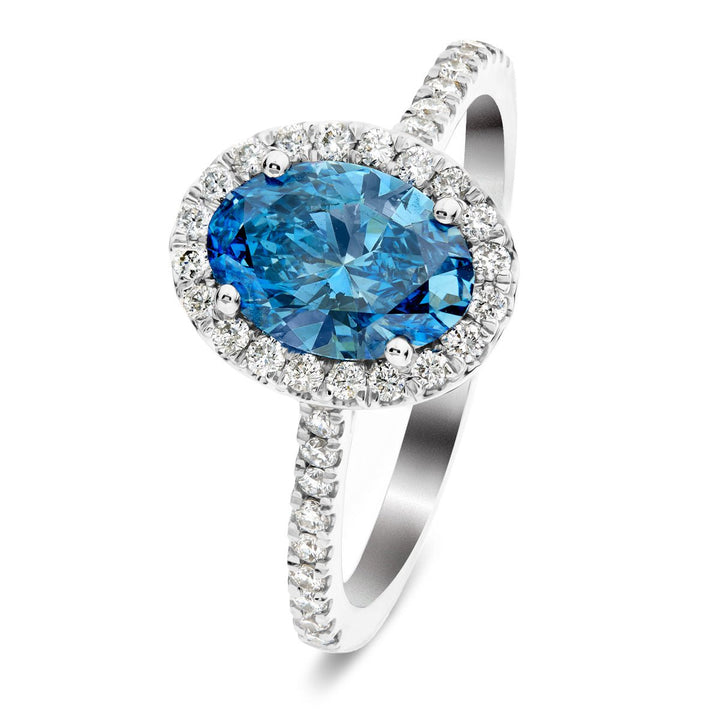
£1,348.00
£2,845.00
The Isla Blue Lab Oval Diamond Halo Engagement Ring is an enchanting blend of colour and brilliance, perfect for those seeking a unique and luxurious symbol of their commitment. At its heart lies a vivid blue, VS quality lab-grown diamond… read more
Market Alchemy: When Stories Outshine Stones
When Legends Become Lore
One may be tempted to believe that the prestige of gemstone jewellery is solely based on their scarcity. But as research shows, natural stones can vanish from the top tier not by becoming rare but by being replaced or altered by new technology and mass production. Pearls, once the currency of kings, are now a commodity. Tanzanite, once a single-source marvel, became too available, too manipulated, and lost its unique status almost overnight.
You might picture that Victorian mother-in-law again, pearls in hand, scandalised by their modern worthlessness. Or perhaps you see a collector, once dazzled by tanzanite’s velvet blue, now wary of stones that gleam under showcase lights but crack under scrutiny. The market, ever restless, moves on to the next trend: vibrantly coloured gems, custom-cut stones, and birthstone jewellery that promises meaning as well as beauty. Spinel, tourmaline, and yellow sapphire—these are the new darlings of the top gemstone jewellery scene.
Yet, beneath the surface, the lesson lingers. The most coveted loose gemstones are not always those that shine the brightest or are easiest to find. They are the ones whose stories endure—whose rarity, authenticity, and legacy cannot be replicated in a lab or conjured by clever marketing. In the end, it’s not just about what you wear, but the legend you carry with you.
Factories, Folklore, and Fakes: The New Age of Illusion
Picture yourself scrolling late at night, the blue glow of your phone lighting up the room. You’ve just stumbled across a video—maybe it’s TikTok, maybe Instagram—where a crystal healer, all moonlight and mystery, swears by the power of blue obsidian. “Rare,” she whispers. “Volcanic. Charged with ancient energy.” You’re tired, you’re curious, and before you know it, you’ve ordered a bracelet, convinced it’s a piece of the earth’s secret heart. But what if, weeks later, you discover it’s nothing more than dyed industrial glass, poured in a factory and sold as magic?
Blue Obsidian: TikTok’s Volcanic Mirage
That’s the story of blue obsidian, the TikTok miracle that never was. In the early 2000s and 2010s, this so-called “crystal” crept into new age shops and digital shopfronts, wrapped in tales of sacred mountains and tectonic fire. It was marketed as a shield for your soul, a stone for transformation. Yoga teachers wore it, energy healers prescribed it, and influencers raved about its calming effect. No one seemed to mind that no geologist had ever seen it in the wild. The myth shimmered louder than the truth.
Behind the candlelit displays and velvet pouches, blue obsidian was never found in nature. It was made. Factory workers mass-produced it, dyed it a hypnotic blue, poured it into moulds, and cooled it under fluorescent lights. It wasn’t cut from cooled lava but shaped from melted marketing. The market wanted magic, and the factories delivered—until a few curious gemologists started asking questions.
They tested the stones and compared them to real obsidian from Iceland, Mexico, and Armenia. The results were clear: no match. No natural deposit existed. The reports went public, and the illusion shattered. Science called it a modern hoax, and suddenly, the digital age that had spread the myth turned on it. Communities on Reddit and Discord began exposing sellers. Etsy and Amazon purged thousands of fake listings. The blue obsidian bubble burst, leaving behind a lesson in the power—and peril—of gemstone industry trends in the age of social media.
Lab Diamond Emerald Halo Earrings 0.50ct D/VVS in 925 Silver
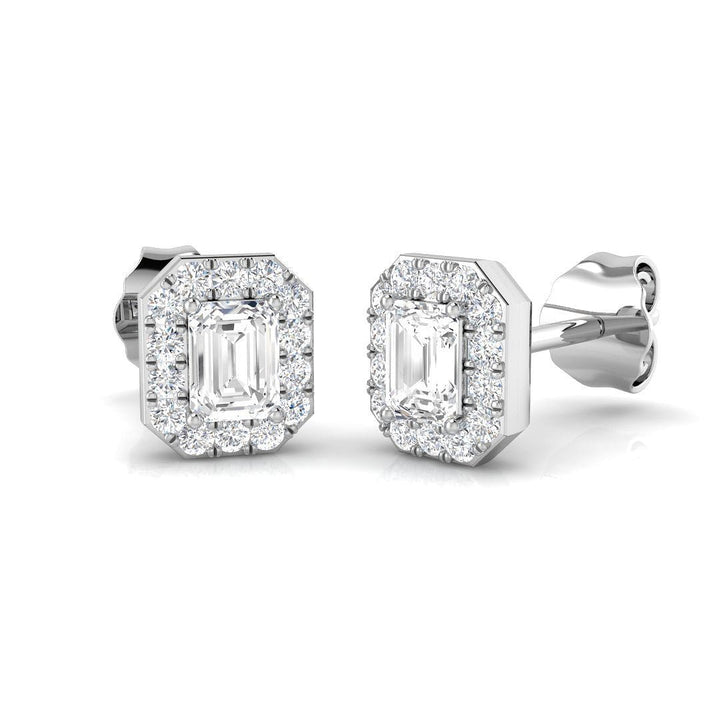
£309.00
£595.00
Discover the enchanting allure of our Lab Diamond Emerald Halo Earrings, meticulously handcrafted in the UK. These exquisite earrings feature a total of 0.50ct of D/VVS quality lab-grown diamonds. The central stone is an elegant emerald cut diamond. The luxurious… read more
Moissanite: The Rise and Recoil of a Lab-Made Marvel
But blue obsidian wasn’t the only star to rise and fall. In the world of unique colours and statement rings, another competitor once promised a revolution. Enter moissanite: the ethical diamond alternative. Born not in the earth, but in a laboratory, moissanite arrived with a question: what if brilliance could be engineered? What if eternity didn’t need to be carbon?
Discovered in a meteorite crater in 1893, natural moissanite was rarer than hope. But when scientists learned to create pure silicon carbide, they unlocked a gem with more fire than diamond, more clarity, and—most importantly—far less cost. Moissanite was marketed as the rebel’s choice, a sparkle with a conscience. For a while, it worked. Shoppers dazzled by its brilliance embraced it, seeing it as independence from the diamond monopoly. Proposals, weddings, anniversaries—moissanite was everywhere, a symbol of ethical luxury.
But brilliance, when pushed too far, can become a flaw. Gemologists noticed moissanite’s double refraction, a light-splitting effect that made it almost too fiery. Under magnification, it danced chaotically, shimmering with an intensity that felt exaggerated, synthetic, too perfect. And then, around 2018, the real rival arrived: lab-grown diamonds. Not a simulant, but the real thing—physically and chemically identical to mined diamond, indistinguishable even to experts without advanced tools.
Lab-grown diamond prices fell by half, then by half again. Suddenly, moissanite’s claim to ethical brilliance lost its shine. Buyers who once saw it as the future moved on. By 2023, moissanite’s resale value had dropped by over 60%. Its market evaporated almost overnight. As one industry insider put it,
‘Moissanite didn’t lose because it lied. It lost because truth evolved faster than it could catch up.’Even natural diamonds, long the unchallenged icons of luxury, felt the tremors. As lab-grown stones became more affordable and indistinguishable, the value of mined diamonds tumbled. Retailers pivoted, offering only mined or lab-grown diamonds, and moissanite—once the darling of ethical sparkle—became an echo, too bright, too available, too obviously artificial.
3ct Lab Diamond Tennis Bracelet D/VVS Quality Set in 9k Yellow Gold
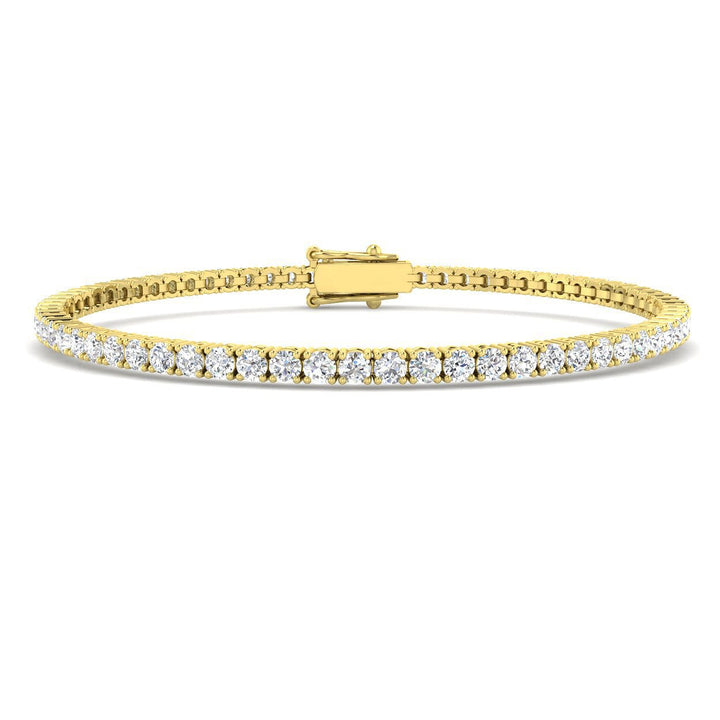
£1,289.00
£2,075.00
Captivate hearts with this lab diamond tennis bracelet. Handcrafted in the UK, this elegant piece features 3 carats of D/VVS quality diamonds set in 9k yellow gold, exhibiting a subtle, timeless charm. Its perfect design and UK hallmark ensure that… read more
Mystic Topaz: The Rainbow That Peeled Off
And then there’s Mystic Topaz, the rainbow that peeled off. For a brief, dazzling moment, mystic topaz was everywhere—on QVC, in bridal sets, and in the hands of influencers and metaphysical shops. Its secret? A whisper-thin coating of titanium or niobium, applied in a vacuum chamber to colourless topaz. The result: a gem that shimmered with violet, emerald, and amber fire, a prism in every facet. It was marketed as rare optical magic, a mood stone for a new era. Buyers rarely asked where the colour came from—only that it changed.
But magic, once peeled back, rarely keeps its price. Everyday wear scratched the coating. Chemicals and heat dulled the rainbow. The customers' confidence collapsed when they realised that the colour wasn't inherent in the stone but was applied like paint. Retailers were flooded with returns. Forums lit up with warnings. Gemologists issued advisories stating that the surface coating is not permanent. By 2020, most high-end sellers had quietly dropped Mystic Topaz from their collections.
Lessons From the Glitter Trail
All these stories—blue obsidian, moissanite, and mystic topaz—share a common thread. In the digital age, the line between fact and folklore blurs at the speed of a viral post. Platforms like TikTok, Instagram, and YouTube can turn a factory-made stone into a must-have overnight, but they can also expose a hoax just as quickly. Research shows that today’s consumers are more cautious than ever, armed with forums, social media, and a healthy dose of scepticism. Buying a gem solely based on faith is becoming less common.
Hype vs. Heritage: What Today’s Buyers Really Want
Lab-grown diamonds and synthetic gems are reshaping what collectors value most: authenticity and uniqueness. The market for unique colours is booming, with vivid sapphires, neon spinels, and custom-cut statement rings leading the way. Yet, the hunger for something real—something with a story that stands up to scrutiny—remains. As trends shift and technology evolves, change itself becomes the only constant.
So, next time you find yourself drawn to a stone that promises the moon, pause. Ask questions. Do your homework. In the world of gemstone value, some illusions may appear more vivid than reality, yet the truth ultimately manages to emerge.
Lab Diamond Cluster Drop Earrings 0.70ct D/VVS in 925 Silver
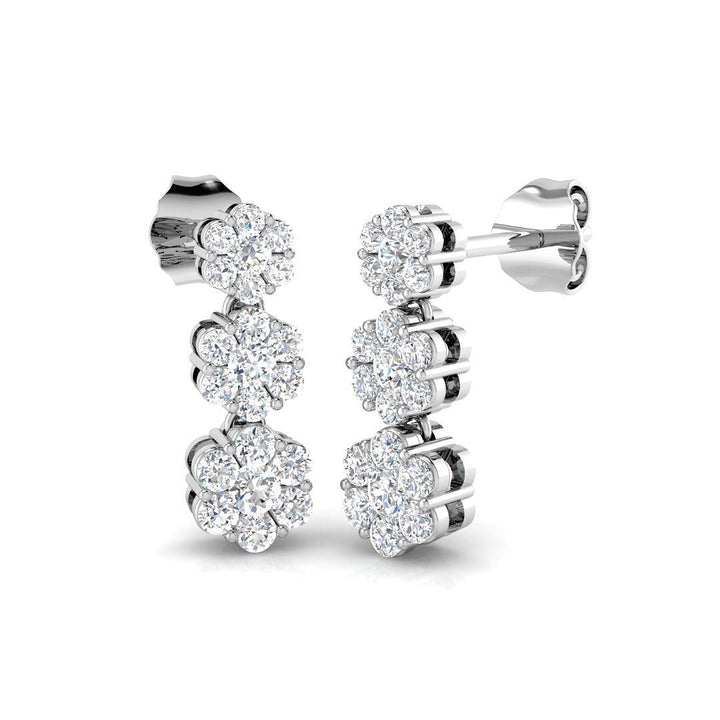
£397.00
£755.00
Elevate your elegance with our Lab Diamond Cluster Drop Earrings, boasting a total diamond weight of 0.70ct in D/VVS quality. Designed with classic sophistication in mind, these earrings feature three meticulously arranged diamond clusters cascading gracefully in a vertical display.… read more
Discover Diamonds Worthy of Your Story
In a world where authenticity is rare, After Diamonds proudly stands apart. Explore our exquisite collections of lab-grown diamond jewellery—real diamonds, real gemstone value, ethically created and meticulously handcrafted right here in the UK by talented British designers. Every piece is a celebration of true artistry, supported by our lifetime workmanship guarantee.
Visit After Diamonds now to find jewellery that shines with genuine brilliance—diamonds as real and enduring as your own story.


